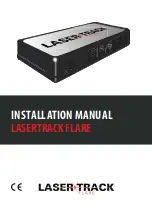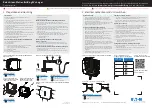
Infant And Child Restraints
Safety experts recommend that children ride
rear-facing in the vehicle until they are two years
old or until they reach either the height or
weight limit of their rear-facing child restraint.
Two types of child restraints can be used rear-
facing: infant carriers and convertible child
seats.
The infant carrier is only used rear-facing in the
vehicle. It is recommended for children from
birth until they reach the weight or height limit
of the infant carrier. Convertible child seats can
be used either rear-facing or forward-facing in
the vehicle. Convertible child seats often have a
higher weight limit in the rear-facing direction
than infant carriers do, so they can be used
rear-facing by children who have outgrown their
infant carrier but are still less than at least two
years old. Children should remain rear-facing
until they reach the highest weight or height
allowed by their convertible child seat.
WARNING!
• Never place a rear-facing child restraint in
front of an air bag. A deploying passenger
WARNING!
front air bag can cause death or serious
injury to a child 12 years or younger, in-
cluding a child in a rear-facing child re-
straint.
• Never install a rear-facing child restraint in
the front seat of a vehicle. Only use a
rear-facing child restraint in the rear seat.
If the vehicle does not have a rear seat, do
not transport a rear-facing child restraint in
that vehicle.
Older Children And Child Restraints
Children who are two years old or who have
outgrown their rear-facing convertible child seat
can ride forward-facing in the vehicle. Forward-
facing child seats and convertible child seats
used in the forward-facing direction are for chil-
dren who are over two years old or who have
outgrown the rear-facing weight or height limit
of their rear-facing convertible child seat. Chil-
dren should remain in a forward-facing child
seat with a harness for as long as possible, up to
the highest weight or height allowed by the child
seat.
All children whose weight or height is above the
forward-facing limit for the child seat should
use a belt-positioning booster seat until the
vehicle’s seat belts fit properly. If the child
cannot sit with knees bent over the vehicle’s
seat cushion while the child’s back is against
the seatback, they should use a belt-positioning
booster seat. The child and belt-positioning
booster seat are held in the vehicle by the seat
belt.
WARNING!
• Improper installation can lead to failure of
an infant or child restraint. It could come
loose in a collision. The child could be
badly injured or killed. Follow the child
restraint manufacturer’s directions exactly
when installing an infant or child restraint.
• After a child restraint is installed in the
vehicle, do not move the vehicle seat for-
ward or rearward because it can loosen the
child restraint attachments. Remove the
child restraint before adjusting the vehicle
seat position. When the vehicle seat has
been adjusted, reinstall the child restraint.
SAFETY
110
Содержание DURANGO 2019
Страница 6: ...4 ...
Страница 215: ...213 ...
Страница 248: ...Using The Touchscreen Radio Rear Media Control Screen MULTIMEDIA 246 ...
Страница 278: ...276 ...
Страница 279: ...277 ...
Страница 280: ...278 ...
Страница 281: ...279 ...
Страница 282: ...280 ...
















































